You are implementing seamless stitching between two data centers and have a proposed configuration for a border leaf device.
In this scenario, which two statements are correct? {Choose two.)
You are preparing an sFlow monitoring system configuration.
In this scenario, what Information will be included in the datagram sent to the sFlow collector? (Choose two.)
You are selling up an EVPN-VXLAN architecture (or your new data center. this initial deployment will be less than 50 switches: however, it could scale up to 250 switches over time supporting 1024 VLANs. You are still deciding whether to use symmetric or asymmetric routing.
In this scenario, which two statements are correct? (Choose two.)
Exhibit.
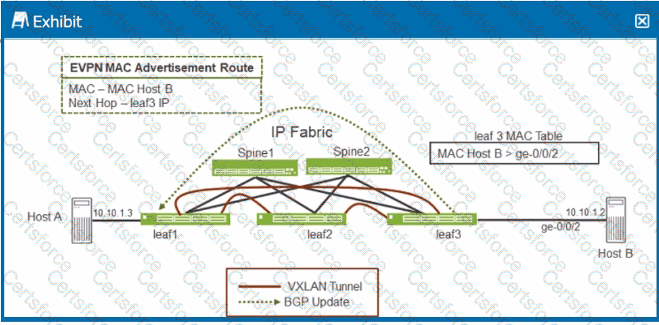
Referring to the exhibit, when Host A sends an ARP request for Host B's IP address, which Junos feature does leaf1 require to send an ARP response back to Host A without having to send a broadcast frame over the fabric?
You are asked to interconnect two of your company's data centers across an IP backbone. Both data centers require Layer 2 and Layer 3 connectivity. In this scenario, which three actions would accomplish this task? (Choose three.)
Exhibit.
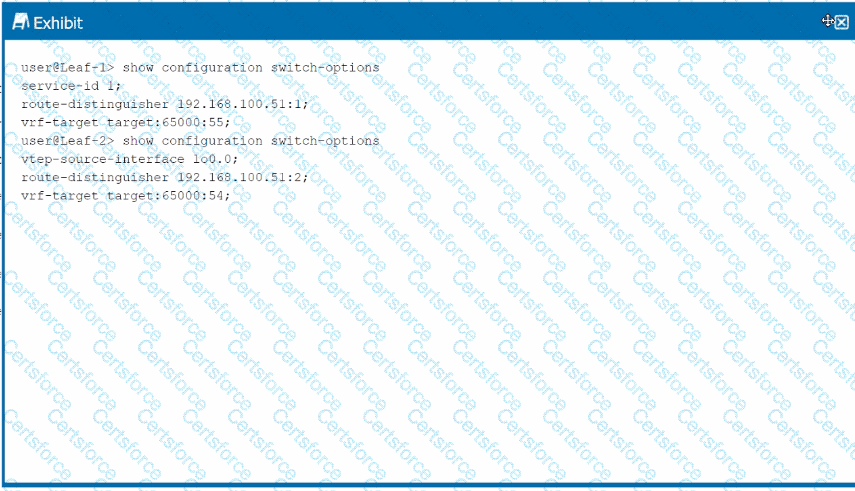
Connections between hosts connected to Leaf-1 and Leaf-2 are not working correctly.
Referring to the exhibit, which two configuration changes are required to solve the problem? (Choose two.)
Exhibit.
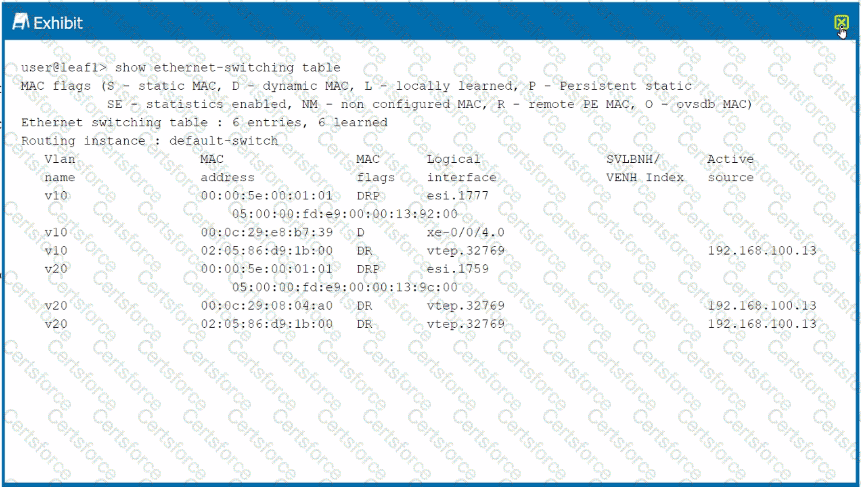
Referring to the exhibit, why is the active source field blank for the entry that uses the 00:0c:29:e8:b7:39 MAC address?
Exhibit.
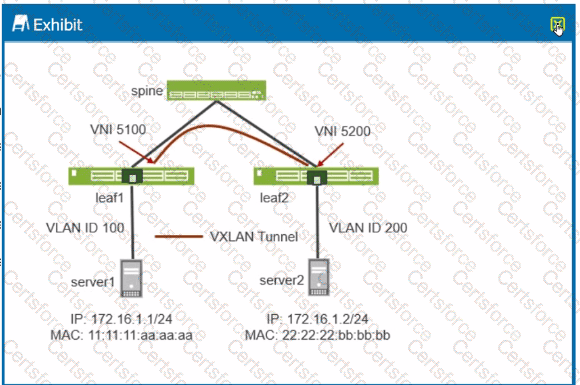
A VXLAN tunnel has been created between leaf1 and Ieaf2 in your data center. Referring to the exhibit, which statement is correct?
Exhibit.
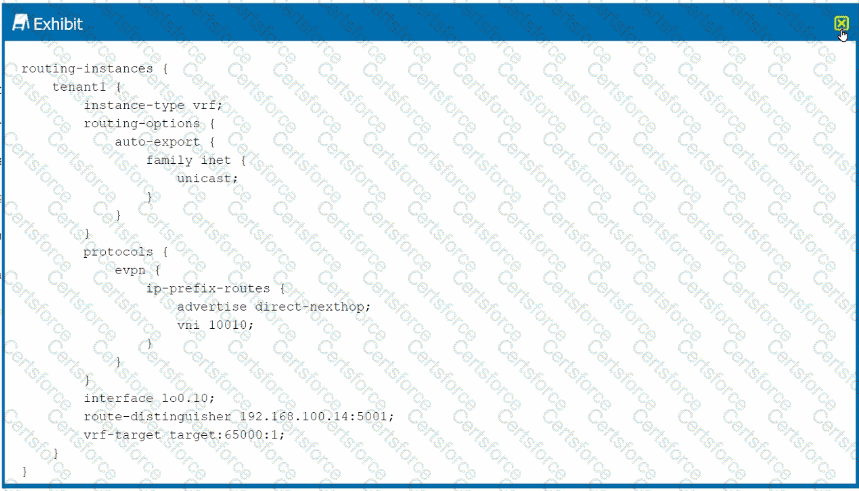
You want to enable the border leaf device to send Type 5 routes of local networks to the border leaf device in another data center. What must be changed to the configuration shown in the exhibit to satisfy this requirement?